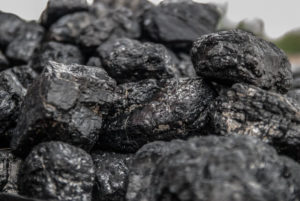Approximately 11.6 million homes in America use wood as a heat source. This means that there are 11.6 million chimneys in our 50 states. Of all the 
Creosote Buildup
Unlike carbon which is dusty and dry, creosote is flaky and sticky. It’s sticky because it is primarily made up of tar which occurs naturally in nature and is a byproduct of organic fuel. Because of its stickiness, creosote will build up in the flue interior as more and more moves through the flue. This is a two-fold problem. First, the flue becomes obstructed and airflow slows. Second, as the air slows, the chimney vents the fireless efficiently, and this leads to even more buildup.
Unfortunately for your chimney, in addition to being sticky, tar is extremely flammable. As the air in your flue slows down, the extreme temperatures can transform the creosote into “glazed creosote” and stray sparks can ignite the highly-flammable mass, much more flammable than creosote itself.
Glazed Creosote Buildup and Fire Risk
Level three or glazed creosote is the result of creosote being exposed to high temperatures. The creosote boils and moisture evaporates, transforming the creosote into a dense, brittle, condensed fuel made up of flammable tar. When your creosote reaches this states it’s not only a serious obstruction for your flue but becomes a fire hazard. Once glazed creosote ignites it burns hot and fast, often unnoticed completely by the homeowner. This type of fire burns up the fuel (creosote) and then dies due to a lack of oxygen and a lack of fuel. These highly pressurized fires can break masonry and damage flue liners which all go unnoticed by the homeowner. If left unswept, a chimney will experience a fire like this which damages the system. Most homeowners will continue using the system and the damage won’t be discovered until the end of burn season when an inspection is scheduled! Damage like that caused by a creosote flue fire can allow smoke and carbon monoxide into your living space, causing respiratory issues, injury, and even death with prolonged exposure. If you think you’ve experienced a flue fire of any kind, you should schedule an inspection with a certified chimney sweep to ensure your family is safe and your chimney is intact.
Signs of a Flue Fire
Chimney flue fires occur all the time without anyone ever knowing it until the damage is eventually noticed by a professional. Though fires may still occur without your knowledge, you may be able to spot an occurrence better if you know the signs.
- Whooshing in the fireplace. If you hear a sudden whooshing in the fireplace, this is a clear indicator of a fire in the flue.
- Loud popping or cracking. Like whooshing, excessive sounds of popping and cracking is a sign of a flue fire and this is a result of high pressure, likely damaging your chimney!
- Dense smoke. If your chimney is releasing smoke that is dense or black in comparison to regular wood smoke, your fire is likely burning something other than wood. It is likely burning creosote inside your flue.
- An intense burning smell. If your fireplace smells of anything other than wood-burning, there is likely a flue fire above the fireplace. The smell may be creosote, or the chimney heating other structural components of your home through a damaged chimney.
Removing Creosote for Safer Chimneys
The chimney is safer and more efficient when it’s cleaned on a regular basis and inspected every year. A CSIA certified chimney sweep is able to remove creosote, carbon, and other particles during a standard chimney sweep appointment. A trained professional can clean the chimney from top to bottom using brushes and rods and contain the mess using an industrial vacuuming system.
This job becomes more difficult when the creosote is left to buildup and eventually turn to glazed creosote. Glazed creosote cannot be brushed away. In fact, it would have to be chiseled off which usually damages the flue liner and parts of the chimney. Fortunately, homeowners in and around Shreveport, Louisiana can schedule a glazed creosote removal with New Buck Chimney Services, restoring chimney safety and maintaining chimney health in the face of danger.
Our technicians remove glazed creosote by using an industrial product that we simply brush on. As the creosote absorbs the liquid, the dense mass is transformed into soft flakes that fall away on their own and can be brushed away with our tools and vacuumed up with everything else in the chimney.
If you haven’t had your chimney cleaned by a professional in the last twelve months, now is the time. Before burning your fire this winter and risking a flue fire that can damage your chimney and destroy your home.
Schedule a chimney sweep with New Buck Chimney Services today by calling 318-674-2825.
